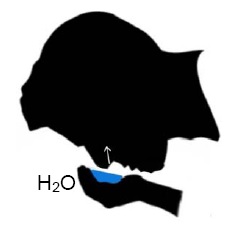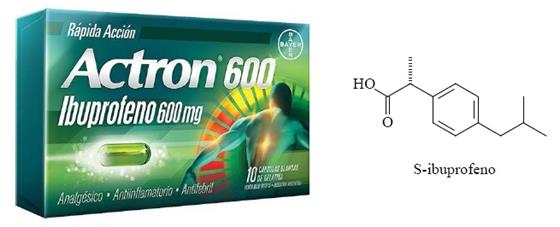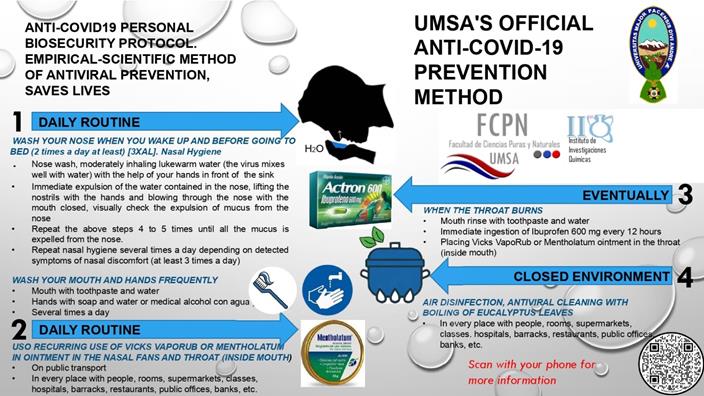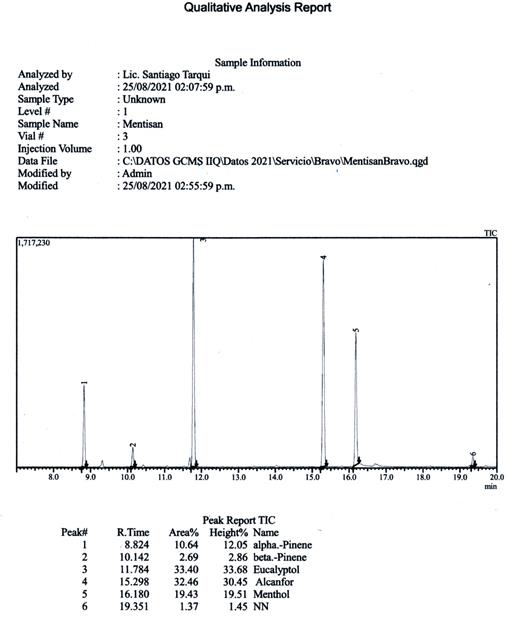INTRODUCTION
The current global health crisis caused by the rapid expansion of the coronavirus seems to have no end and carries negative side effects such as the economic slowdown, particularly in developing countries with fragile and dependent economies, in contrast to strong economies in countries and rich empires, with more and better financial and health resources. Thus, Latin America, in these unfortunate times, ends up being the worst performer in combating the rapid development of viral contagion with social impacts that are still difficult to assess due to its severity, placing this region of the world as the one most affected by the viral pandemic. Hopelessness and hunger, in addition to the lack of economic resources and health facilities, only paint the worst of the scenarios that seem to expand at infinitum a bleak future difficult to predict.
However, being the viral development of a microscopic (molecular) nature, from a chemical point of view in stricto sensu, the problem does not look so gigantic and it is possible to apply the knowledge about organic molecules and their physicochemical characteristics to envision easy strategies of social application, with satisfactory and shocking results. It is worth mentioning that those in charge of combating the pandemic, medical professionals not immersed in basic research, lack the microscopic or molecular vision of the phenomenon, clear proof, the innumerable deaths among doctors, who lack the aforementioned vision. It is the purpose of this article of scientific rigor, but that aims to reach a wide reading public, in particular the health authorities of institutions and nationals, to shed light on the appropriate way to PREVENT on a personal level, the contraction of the viral disease.
Based on a rigorous updated bibliographic review on the characteristics of the spread of COVID 19, we present for its dissemination our scientific-empirical method of personal prevention of viral infection. This method was already exposed in a previous publication in Revista Boliviana de Química by the first author of this review 1, it is based on the triple alliance abbreviated as 3XAL, or nasal, oral and manual hygiene in contrast to the only manual hygiene proclaimed by the health authorities of Bolivia and the world. Apart from 3XAL, the sustained use of the galenic preparation based on natural products, essential oils, under the trade name Vicks-VapoRub® or Mentholatum® or Mentisan® in the prevention of viral development in the respiratory system is equally crucial and imperative. This topical ointment not only has a broad spectrum of antiviral, antibacterial and anti-inflammatory activity, but it has also been shown for two of its four active ingredients to have specific activity against coronavirus COVID 19 (in silico studies), which makes it an effective antiviral for prevention and therapy against COVID 19. This contribution concludes with the use of eucalyptol, essential oil from Eucalyptus globulus (the most widespread species of this genus in the world) and from other plant species, in its use as a disinfectant of closed and unventilated spaces, in a home or work context.
There are three methods of fighting a viral pandemic of the proportions of COVID 19:
- Prevention
- Immunization (vaccination)
- Therapy
By far, the most important method is prevention, secondly immunization and finally therapy. The current high rate of infections and fatality due to coronavirus is due to a mistake in the application of prevention. The health authorities have erred in trying to define the appropriate biosecurity protocol for such viral infection by not prescribing either 3XAL or the recurrent use of Vicks-VapoRub® or Mentholatum®, or Mentisan®, consequently, the contagion remains out of control. Immunization, according to recent information (National Institute of Allergy and Infectious Diseases, United States, Dr. Anthony Fauci), is not a guarantee of avoiding contagion, perhaps or fatality 2. As for therapy, it is the least effective, just look at the high fatality rates from COVID 19, this due to the lack of antiviral agents in general. We have applied the correct personal biosafety protocol since the beginning of the pandemic and we have published it 1 without any echo from the health authorities. In fact, the use of broad spectrum antiviral agents (Vicks-VapoRub® or Mentholatum® or Mentisan®) provide the necessary and sufficient prevention to prevent the spread of COVID 19. In January 2021, the validation of two of the active principles of Vicks-VapoRub® or Mentholatum®, or Mentisan®, eucalyptol and alpha-pinene in terms of its specific viricidal activity against coronavirus (in silico studies) was published 3. Furthermore, these essential oils can be applied according to this research 3 for the therapy of COVID 19, in addition to prevention.
Without further ado, we proceed to the presentation of the personal biosafety protocol based on natural products, essential oils, eucalyptol, alpha-pinene: Vicks-VapoRub® or Mentholatum®, or Mentisan®; nasal, oral and manual cleaning.
LIFE-SAVING ANTI-COVID-19 PERSONAL EMPIRICAL-SCIENTIFIC PREVENTION METHOD BASED ON NATURAL PRODUCTS, ESSENTIAL OILS: EUCALYPTOL, ALPHA-PINENE, BETA-PINENE, MENTHOL, RECURRENT USE OF VICKS-VAPORUB® OR MENTHOLATUM®, OR MENTISAN®. NASAL, ORAL AND MANUAL AQUEOUS CLEANING [3XAL] 1
Personal biosecurity, empirical-scientific preventive method
The most important protocol for the prevention of viral infection is personal. Good individual health represents the extinction of the chain of contagion and therefore the improvement of the health of the community 1.
The mean incubation time for coronavirus once it reaches the mouth or nose is 5 to 14 days 1),(4),(5, (the new variants incubate in 2 to 3 days). If an intense oral and nasal cleaning is not carried out in 2 days, the permanence of the virus in the body towards later stages of its reproduction (of the infection) is irreversible. The triple Alliance (AL + AL + AL or 3XAL) of personal hygiene is recommended: Nasal hygiene, oral hygiene and manual hygiene 1.
[3XAL]
The triple alliance of personal antiviral hygiene: Nasal hygiene, oral hygiene and manual hygiene (3XAL) [1].
Being coronavirus an airborne virus or respiratory infection 1 its entry into the body is through the respiratory tract: nose and mouth 1.
Nasal Hygiene:
- Nose washing, moderately inhaling warm water (the virus mixes well with water) with the help of the hands in front of the sink
- Immediate expulsion of the water contained in the nose, lifting the nostrils with the hands and blowing through the nose with the mouth closed, visually check the expulsion of mucus from the nose
- Repeat the previous steps 4 to 5 times until all the mucus is expelled from the nose
- Repeat nasal hygiene several times a day (at least 3) depending on detected symptoms of nasal discomfort
Oral Hygiene:
- Rinsing the mouth with water (the virus mixes well with water), brushing teeth with abundant and prolonged toothpaste until a good amount of foam is achieved
- Gargle with the foam inside the mouth, before rinsing
- Rinse with plenty of water, until all traces of foam are eliminated
- In case of not having the facilities for washing teeth, the moderate consumption of small amounts of alcoholic drink of 40 degrees (40% vol.) Such as singani or whiskey is recommended.
Manual hygiene:
- Manual hygiene is something natural, known since our early childhood, instilled by mom and dad
- Washing with soap is sufficient to remove fat (the virus also mixes with fat) on the palms of the hand and fingers and washing is preferable to the use of ethyl alcohol (viricidal). Use the latter in case of inaccessibility to soap and water
- Recurring hand washing
VICKS-VAPORUB® OR MENTHOLATUM®, OR MENTISAN® 1
It is the great antiviral product for topical use to preventively combat the coronavirus 1,3.
Vicks-VapoRub® or Mentholatum®, or Mentisan® (Galenic preparation in lanolin and vaseline [excipient fats] of turpentine, camphor and menthol, three products extracted from natural sources [essential oils] with proven powerful antiviral action) applied inside the nostrils and in the throat are the appropriate preventive against coronavirus 1, see Fig. 1.
Turpentine ("Spirit of or turpentine oil"), is a liquid obtained by steam distillation of the resin of the wood of certain living trees, eg. the pines 6. The main components and antiviral active principles are the monoterpenes L-(-)-β-pinene and L-(-)--pinene 1),(7),(9, see Fig. 2.
Camphor is the essential oil of the Madagascar tree called ravintsara (Cinnamomum camphora, chemotype cineole) with antiviral properties 1),(10),(11, whose main component is the monoterpene 1,8-cineole (eucalyptol, also present in abundance in the leaves of the eucalyptus [Eucalyptus globulus]), for its broad spectrum antiviral active principle and also specific against coronavirus, 1,8-cineol. 1),(3),(12, see Fig. 2. Also, camphor is an antiseptic and analgesic monoterpene (Fig. 2).
Menthol is the major component of the essential oil of many mint species (Menta arvensis, M. piperita, 1),(13),(14 among others) and has antiviral properties 1),(15. See Fig. 2.
IBUPROFENO® [(RS) -2- (4-isobutylphenyl) propanoic acid] only the S form is biologically active, 600 mg 16
Antipyretic, analgesic and non-steroidal anti-inflammatory drug (NSAID) 16, as such it is indicated for sore throat, among other inflammations such as rheumatoid arthritis and gouty arthritis. Soft gelatin capsules are recommended. See Fig. 3. Inflammation is a tissue process constituted by a series of molecular, cellular and vascular phenomena with a defensive purpose against physical, chemical or biological aggressions (for that matter, coronavirus) 17.
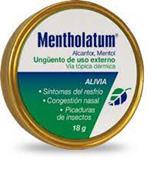

Fig. 1 Vicks-VapoRub® or Mentholatum®, or Mentisan® ointment: camphor, menthol, eucalyptol (specific against COVID 19), alpha-pinene (specific against COVID 19) and beta-pinene, (no image copyright warnings found on the internet)
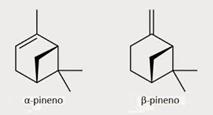


Fig. 2 Vicks-VapoRub® or Mentholatum® or Mentisan® antiviral ingredients: menthol, eucalyptol (specific against COVID 19), alpha-pinene (specific against COVID 19) and beta-pinene, 1 (no image copyright warnings found on the internet)
LIFE-SAVING PROTOCOL [1]
1. Be aware of the symptoms (not necessarily fever) in your nose and throat, this is a personal perception that can save your life. You need to be attentive to the way your nose and throat feel. Faced with the slightest sensation of mucus and rhinitis in the nose or a sore throat (itching), the person's reaction should be immediate, probably due to the presence of a virus (most likely coronavirus). The immediate action is to rinse the mouth and nose, repeatedly, then the application of Vicks-VapoRub® or Mentholatum®, or Mentisan® inside the nose and with the finger directly on the throat. (1).
2. Absolute prohibition of taking antihistamines (flu) against the appearance of nasal flu. Antihistamines treat these allergy symptoms: Congestion, runny nose, sneezing, or itching. Swelling of the nasal passages. Hives and other skin rashes. Antihistamines stop the nasal discharge which is a natural reaction of the body to expel the exogenous body (the virus) in order to eliminate it through watery fluids (similar to diarrhea). Stopping this allergic reaction (mucus) by using antihistamines (flu) is allowing the virus to stay longer at the beginning of the respiratory tract (nose, mouth and throat) increasing the risk of worsening the respiratory infection. Antihistamines (flu) are a non-therapeutic commercial product. What should be applied instead of antihistamines is 3XAL. (1).
3. If the first symptoms described in point 1 persist after washing and using Vicks-VapoRub® or Mentholatum®, or Mentisan® spray directly into the nose, first one nostril and then the other with oregano vapors, Origanum vulgare, in dried leaves (use a domestic Dewar thermos with a tablespoon of oregano and water boiling almost to the top, [leave some empty space above the water surface for the steam to flow], soak up the steam with your nose close to the mouth of the thermos for 5 minutes for each nostril, covering the other) . At the end of the 10-minute session, bend down and force all the liquid substance out of each nostril, lifting and opening the nostrils with your fingers. This practice is a steam extraction of essential oils from oregano that have antiviral properties (18). This session two or three times a day will leave the nose without mucus, that is, without viruses. Repeat the therapy as many times as necessary. Its beneficial effect is noticeable not only in the nostrils, but also in the throat.
4. When the throat becomes inflamed. The presence of the virus in the respiratory tract of the mouth, at the level of the throat (back of the mouth) causes a state of inflammation. Symptoms may be some or all of the following list:
- Burning throat
- Scraped throat
- Stinging throat
- Throat obstruction, swelling, and difficulty swallowing saliva or food, solid or liquid
- Internal sore throat
- Loss of taste ability (decrease or disappearance of organoleptic properties)
Prevention: Immediate intake of 600 mg capsules of IBUPROFENO® one every 12 hours, until the state of inflammation disappears (relief of pain, or discomfort, or hypersensitivity).
Alternative: place in the throat inside the mouth with the finger, Vicks-VapoRub® or Mentholatum® or Mentisan® ointment on both sides of the throat, place mentisan ointment as a topical use on the skin of the neck in the vicinity of the throat.
OTHER PREVENTIVE TIPS AGAINST COVID 19
- When leaving home carry Vicks-VapoRub® or Mentholatum® or Mentisan® with you in your pocket or purse (easily accessible)
- When entering any means of transport, place Vicks-VapoRub® or Mentholatum® or Mentisan® inside the nostrils and then wear the face mask, Vicks-VapoRub® or Mentholatum® or Mentisan® can also be applied in the nostrils when exiting the transport.
- When entering any commercial or other environment (cinemas, conference rooms or classrooms) that is roofed and with walls, it surely contains people and surely lacks a ventilatory system for air renewal, this increases the humidity of the environment due to respiration (H2O + CO2), if there is a virulent individual (coronavirus), the water in the environment (air) contains the virus and can be inhaled by the recipient, the virus has reached the nose or throat through the air (infected aerosol). If that happens and the person who enters has placed Vicks-VapoRub® or Mentholatum® or Mentisan® before entering and then leaving the environment, the drug immediately inactivates the virus as soon as it reaches the nostrils. It is also possible, if there are many people inside the place, to place Vicks-VapoRub® or Mentholatum® or Mentisan® with the finger on the throat, inside the mouth. If there has been contagion, the virus is inactivated and cannot enter the cells and therefore does not reproduce, there is no development of the viral disease. Arriving home or if a sink is available on site, proceed to wash the nostrils and apply Vicks-VapoRub® or Mentholatum® or Mentisan® in the nostrils and proceed according to the LIFE-SAVING PROTOCOL. For people who stay in an office with collaborators (many people in the same environment), apply Vicks-VapoRub® or Mentholatum® or Mentisan® every hour in the nostrils. If you feel very susceptible, go to the bathroom to wash your nostrils. Any closed environment with people must be saturated by boiling eucalyptus leaves in water, as explained in this article.
- If there is a coronavirus patient at home, it must be isolated in a room that must be ventilated and heated simultaneously. Open windows every hour for 10 minutes and then reheat the room, vaporize the environment with eucalyptus leaves permanently and proceed to their care always observing the LIFE-SAVING PROTOCOL.
- The time to share a community lunch or other type of social interaction where you eat or drink. If possible avoid doing so. If unavoidable, put Vicks-VapoRub® or Mentholatum® or Mentisan® in the nostrils and consume an alcoholic drink instead of soda. If there is a virulent person sharing the table, it is the riskiest moment since everyone takes off their face mask and the aerosols are mixed between the diners at the same table and there is a strong viral transmission between the infected person and the recipient. Food itself does not transmit the coronavirus, because the virus is inactivated by losing integrity of its viral membrane or envelope in contact with food, whether liquid or solid, cold or hot.
- Airborne transmission is very effective in crowded, unventilated environments. In the street or fields with non-crowded people there is great ventilation, the transmission is negligible and you can remove the face mask if you are alone and there are no talks with people. As soon as an interpersonal approach is given, cover the mouth and nose with a face mask applying Vicks-VapoRub® or Mentholatum® or Mentisan® previously.
USE OF EUCALYPTUS OIL AS AN INDOOR AIR DISINFECTANT
In the current COVID-19 pandemic, there is a lot of information about the disinfection of surfaces with chemicals, as well as about potential treatments in humans. However, there is limited information on microbial decontamination of indoor air (homes, offices, classrooms, hospitals, etc.) to reduce the risk of transmission of pathogens between people.
The microbial world is quite broad in diversity, only a small percentage represents a risk to human health, however, this small percentage is a challenge with a significant socioeconomic impact (19). Most viral infections in humans are caused by coughing, sneezing, and when we talk in the form of droplets containing pathogens whose size is between 0.3 and 2000 µm (20)-(23), or by contact with the nose and mouth and by aerosols (simple made of breathing). The size of the particles depends on the amount of solute that is contained in them(24). The droplet size is related to the relative humidity of the environment, the higher the humidity in the environment these droplets tend to precipitate and if the humidity is lower they will remain in suspension for a longer time. Air temperature plays an important role in the stability of lipids (or hydrocarbons like essential oils), for example, influenza, coronavirus, respiratory virus, they are stable with low relative humidity and low temperature in the environment (25).
Indoor air decontamination
- Indoor air decontamination can be a complement to infection prevention and control.
- Simple aspects such as a little smoke allow us to detect less ventilated areas where pathogens are more likely to concentrate.
- Indoor environment decontamination techniques:
1. Ventilation. Ventilation or aeration of the environment is the most important means to decontaminate an environment, but it is not applicable in buildings due to design (26). Mechanical ventilation can be effective only if it is well designed in the indoor environment, but it is expensive.
2. Ozone. It can be generated from the oxygen in the ambient air using UV light, laser, high voltages, electrical discharges or chemical reactions (27). To incorporate these systems, extreme care must be taken since concentrations greater than 5 ppm represent a risk for the occupants (28).
3. Ultraviolet radiation. For hospital use (26).
4. Electrostatic precipitator. Electrostatic Precipitators are used in industries, homes and public buildings, they have proven to be very effective in filtering a wide range of particles (29),(30).
5. Filters. Filters include fibrous, mechanical, microbicidal, and electrically charged filters, which are generally not washable. Electrically charged porous filters generally incorporate a virucidal, bactericidal or fungicidal, for influenza viruses eucalyptus oil is used (31),(33).
6. Hydrogen Peroxide. Nebulization with hydrogen peroxide in occupied spaces can be carried out as it is not toxic to humans or corrosive to materials (34).
7. Essential oils. The use of essential oils from natural products used in aerosol form, such as eucalyptus oil, has been shown to have a viricidal effect (35),(36).
8. Others. Plasma discharge, photocatalysis, filtration and chemical treatment, filters in situ with ozone, electrical discharge or activated carbon fibers.
Virucidal activity of eucalyptus essential oil
The eucalyptus is a very important tree in phytotherapy, it belongs to the Myrtaceae family, it includes 140 genera and around 3800 species distributed in tropical and subtropical zones with reported biological activities (37). Its active principle is the essential oil of eucalyptus, which has antibacterial (38),(41), antiviral (41),(43) and antifungal (43) activity. The leaves contain between 1.1 - 0.4% essential oils with 77% 1.8 cineole (43),(44). Eucalyptus oil has been efficient against HSV-1 and HSV-2 influenza viruses. The virucidal activity (45)-(49) of essential oils, which are lipophilic in nature, is probably due to disruption of the viral membrane or interference with the viral envelope protein, as can be shown in Fig. 4 (3),(50). Essential oils from various plant species have been tested against COVID 19 with good antiviral activity results (51),(52).
1,8-Cineol (Eucalyptol)
1,8-cineole or eucalyptol is the most important antiviral active principle of the mixture of terpenes that constitutes the essential oil called Camphor (1),(10),(11), present in the Vicks-VapoRub® or Mentholatum® or Mentisan® preparation. 1,8-Cineol (IUPAC: 1,3,3-trimethyl-2-oxabicyclo [2,2,2] octane) is a monoterpenic molecule (secondary metabolite) present in approximately 30 plant species (53). Studies on eucalyptus oil against the influenza virus, where the main chemical compound is 1,8-cineole, showed more activity (94 ± 3 % of effectivity) in the vapor phase, after 10 minutes of vaporization, than the activity in the liquid phase (54),(57), so, the vapors of these oils could have therapeutic benefits for people suffering from influenza or other respiratory diseases caused by viruses (58). These results are consistent with the anti-COVID-19 preventive activity of the use of Vicks-VapoRub® or Mentholatum® or Mentisan®(1),(3) where eucalyptol and other active ingredients are mixed. Investigations on the biological activity of five species of the genus Achillea(59),(62) showed that they had activity on respiratory infections, being 1,8 cineole the common molecule to the five species studied. This main compound is well tolerated in inhalation administrations(58).

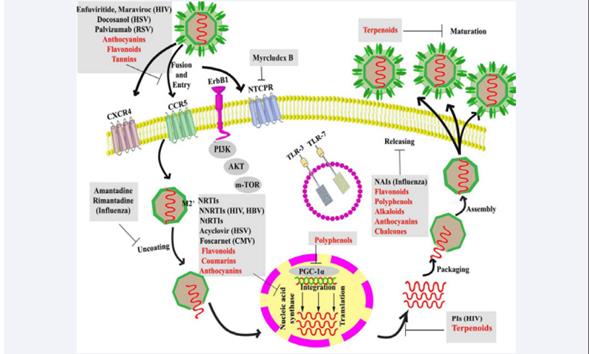
Fig. 4 Host target proteins and various steps in the viral life cycle using current alternative and therapeutic natural products (in red). HIV, human immunodeficiency virus; HBV, hepatitis B virus; HSV-1/2, herpes simplex virus-1/2; NtRTls, nucleotide reverse transcriptase inhibitors; NRTls, nucleoside analog reverse transcriptase inhibitors; and NNRTls, non-nucleoside reverse transcriptase inhibitors; NAls, neuraminidase inhibitor; PGC1-a, peroxisome proliferator-activated receptor-gamma 1-alpha coactivator. [50]. Reproduction authorization pending from Med Sci Res.
Use of eucalyptus essential oil in Bolivia
Eucalyptus is widely used in traditional Bolivian medicine, particularly in the Andean and sub-Andean areas, mainly against colds in winter. In the form of water vapor containing eucalyptus leaves and stems, it is used in bedrooms for bronchitis, coughs and pneumonia. To achieve the preparation, 1 liter of water is boiled, adding 20-30 eucalyptus leaves, renewing them when they lose their aroma. This way of disinfecting closed environments has been carried out in Bolivia since ancient times and is currently not standardized or recommended by academic institutions such as the University.
In traditional Bolivian medicine, dry or wet leaves are used against cough and flu, in decoction: antiseptic wound washing, in inhalations against bronchitis and catarrh, in fumigations as antiseptic and disinfectant (63).
Proposal
Through this document it is intended to support the use of eucalyptus oil as a prevention against colds caused by different types of viruses (namely COVID-19) in closed environments (offices, classrooms, buildings, hospitals, etc.). Disinfection of the interior air of different closed and crowded environments through the vaporization of eucalyptus leaves is possible. The environmental impregnation for 10 min before the entry of people to the places is sufficient to attain the virucidal effect of 1,8-cineole by inactivating the virus in the vapor phase. Scientific articles in international journals and the knowledge of traditional Bolivian medicine support this proposal.
Plant species rich in eucalyptol content
Boiling of the aerial parts of these species provides eucalyptol in the air of environment.
- Aframomum corrorima.
- Aloysia citrodora Paláu: cedrón, hierba Luisa, verbena olorosa
- Artemisia tridentata.
- Cannabis.
- Corymbia citrodora
- Cinnamomum camphora, camphor laurel (50%)
- Eucalyptus cneorifolia.
- Eucalyptus dives.
- Eucalyptus dumosa.
- Eucalyptus globulus.
CONCLUSIONS
The empirical-scientific preventive method against COVID-19 is: [3XAL] and Vicks-VapoRub® or Mentholatum® or Mentisan® (added with Ibuprofen®). It is the one of easy application and of economic access for the Bolivian population, and it is the first to be applied and it is more important than immunization and therapy.
Washing only your hands is not enough; government policy must change to face the spread of COVID-19 in Bolivia, through the dissemination of the information contained in this article ([3XAL] + Vicks-VapoRub® or Mentholatum® or Mentisan®). COVID-19 is an airborne virus, and its main means of transmission is through the air in aerosols, saliva and mucus of the infected.
The use of the face mask is not enough, Vicks-VapoRub® or Mentholatum® or Mentisan® ointment must be used repeatedly applied to the respiratory tract (nose, mouth), especially when boarding of public transportation and in environments without ventilation and congested with people.
The main anti-COVID-19 active principle is eucalyptol contained in Vicks-VapoRub® or Mentholatum® or Mentisan®. Being a volatile compound (essential oil), it is separated from its natural source (plants), for example, eucalyptus (abundant in Bolivia), by “steam distillation” a laboratory method to extract essential oils from plants. Boiling eucalyptus leaves saturates closed environments (home, work) with humidity, containing eucalyptol (1,8-cineole), whose antiviral efficacy has been demonstrated in this article by the corresponding bibliographic review. Doing so makes it possible not to depend on permanent or frequent ventilation of home and work environments to eliminate the virus from the air (in the case of the presence of an infected person in it). Since most of the buildings and houses in Bolivia lack an integral system of renovation and heating or cooling of the air (central system of renovation and air heating or cooling), there is a risk of the site’s cooling due to abrupt and forceful lowering in the ambient temperature. In the hot areas of Bolivia, on the contrary, due to ventilation (opening windows and doors) the air conditioning (cooling) of the rooms is lost. The option for both types of environment (heated or cooled by air conditioning): boil eucalyptus leaves. This reduces the risk of contagion since aerosols containing viruses become mixed (by saturating the relative humidity of the environment by boiling eucalyptus) with vapors containing eucalyptol, which deactivates the virus.












 uBio
uBio 

